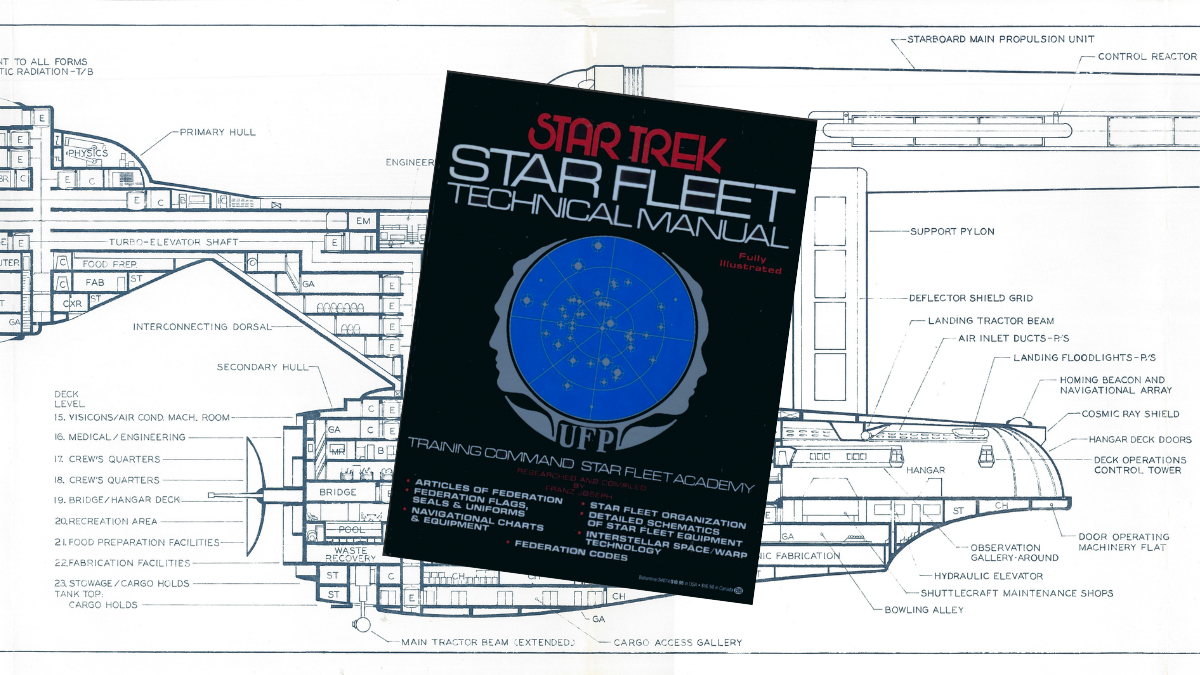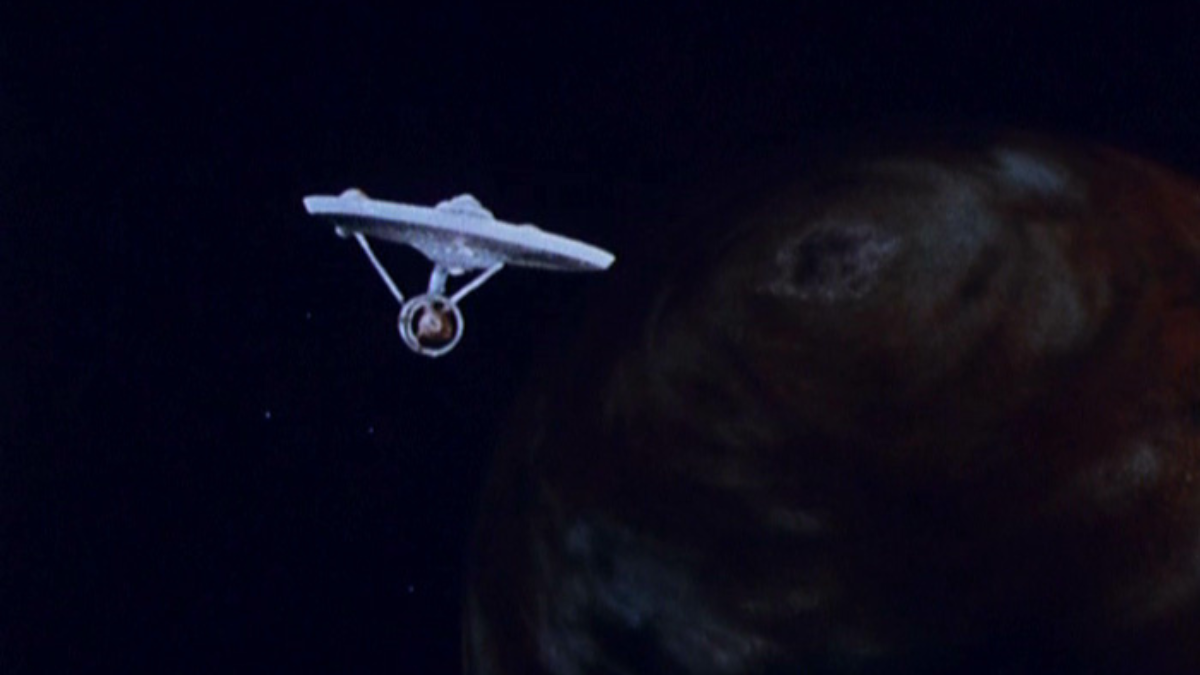'Star Trek' History: Which Came First, Voyager or V'Ger?

Left: One of the Voyagers in the 25-foot space simulator chamber at NASA's Jet Propulsion Laboratory, April 27, 1977. Image: NASA/JPL-Caltech. Right: Voyager 6 in STAR TREK: THE MOTION PICTURE. Image: Paramount.
SEPTEMBER 2, 2022 - A lot has been talked and written about lately concerning Star Trek: The Motion Picture. Not only is the 4k Director’s Cut set to be released on Blu-ray next week, but two days ago the beautiful book Star Trek: The Motion Picture: Inside the Art & Visual Effects was released. It may not be a big anniversary for the film (after all, it just turned 40 three years ago) but for Trek fans, it’s still a big deal, worth a bit of hype.
In all honesty, TMP gets a bad rap, sometimes referred to as “The Motionless Picture” by its detractors. True, it can drag a bit in some places, and the Visual Effects team, rightfully proud of their work, may have been allowed too much screen time to strut their stuff. But at its core, the message is very Star Trek and the musical score is possibly the most beautiful one in the entire franchise.
What is rarely mentioned is how real-world events may have shaped the story. You may recall that the denouement of the film sees the Enterprise crew entering the massive vessel which is run by something or someone calling itself “V’Ger” in search of a way to prevent it from destroying Earth. Once inside, they discover that the brain of the ship is an ancient probe, launched from Earth in the late 20th century. When it disappeared, it was recovered by the inhabitants of a “machine planet” who souped it up and sent it in search of its creator. Humans are its God, and its true appellation is “Voyager 6.”
TMP was released in 1979, two years after Voyagers 2 and 1 were launched by NASA, on August 20 and September 5, respectively. Their five-year mission (really, that’s how long they were expected to last!), much like the Enterprise’s, was one of exploration, flying past Jupiter, Saturn, Neptune, and Uranus to collect data that they could transmit back to Earth. In 2012, Voyager 1 became the first human-made object to pass beyond the heliopause, the region that defines our Sun’s influence, and into interstellar space. Despite having launched first, Voyager 2 only followed its sibling past the same threshold seven years later.
The Golden Record cover shown with its extraterrestrial instructions. Image: NASA/JPL.
But although exploration is their primary mission, scientists hope that they will fulfill a secondary one, as well. Voyager 1 is carrying a very special payload: a “golden record,” situated on its own turntable. The hope is that if the probe happens across extraterrestrial life, a Vulcan or a Trill maybe, they will possess the skill to play it and learn a little bit about us before setting course for Earth. The record contains 115 images; a variety of natural sounds, such as animals, wind, and thunder; a selection of music from various cultures throughout history; and greetings in fifty-five different languages.
If you’re looking at a calendar, then you realize that this year marks the 45th anniversary of the launch of the probes. NASA and the Jet Propulsion Laboratory (JPL) celebrated the occasion with a party on August 18 as reported by Mat Kaplan, host of the Planetary Society’s official podcast, Planetary Radio
“Really, this whole field, our whole discipline of planetary scientists…would not be here without this mission,” Suzanne Dodd, JPL’s Director for the Interplanetary Network Directorate, said in her keynote. “I think Voyager and Viking really are the foundation upon which all of planetary science has been built.”
Guests at the event included current JPL staff, interns who weren’t even a gleam in their parents’ eyes when the Voyagers launched, and members of the mission team, including Ed Stone. Born in 1936, Stone became Voyager’s Project Scientist right at the beginning, in 1972, and still holds that title today, at age 86. To state it more succinctly, Stone is the only Project Scientist Voyager has ever had!
Ed Stone receives an award from Nichelle Nichols on the 30th anniversary of the Voyager launches, 2007. Image: NASA/JPL-CalTech.
There may never be a Voyager 6 as predicted by Star Trek but had the Voyager program never existed, humans may not be looking at exploring other planets, such as Mars, today. The probes have lasted longer than 9 times their expected lives and are still sending data back to Earth that real-life scientists are using to learn more about our solar system and what lies outside it.
According to Stephen J. Pyne, Professor Emeritus at Arizona State University, “Voyager did things no one predicted, found scenes no one expected, and promises to outlive its inventors. Like a great painting or an abiding institution, it has acquired an existence of its own, a destiny beyond the grasp of its handlers.”
Pyne may very well have been thinking of TMP when he wrote those words in March 2020. Like many ideas found in the Trek franchise, science fact inspires science fiction, which goes on to inspire more real-world science. It’s a never-ending Möbius strip of inspiration and application, with actual, living humans surpassing the ingenuity of the TV show characters we adore.
Flip-open cell phones were invented because Martin Cooper wanted those Star Trek communicators now, not in 300 years; 3d printers are becoming easier to attain, anticipating the creation of Trek-like replicators; and while iPads look similar to Star Trek: The Next Generation’s Personal Access Display Device (PADD), they carry far more information than the writers of that series imagined.
The Voyager program, too, is ahead of its (Trek) time. It didn’t take JPL scientists six tries to build a probe capable of leaving our solar system. They got it right on the first try. To quote Gene Roddenberry, “Ancient astronauts didn't build the pyramids. Human beings built the pyramids because they're clever and they work hard.” Once again, science fact has surpassed science fiction.
You can visit the Voyager website for more information and to see images and explore the program’s history through a very cool interactive timeline. And listen to the latest episode of Planetary Radio below.
T is the Managing Editor for Daily Star Trek News and a contributing writer for Sherlock Holmes Magazine and a Shakespeare nerd. He may have been the last professional Stage Manager to work with Leonard Nimoy, has worked Off-Broadway and regionally, and is the union Stage Manager for Legacy Theatre, where he is currently working with Julie Andrews. after which he’ll be working on Richard III at Elm Shakespeare Company.








